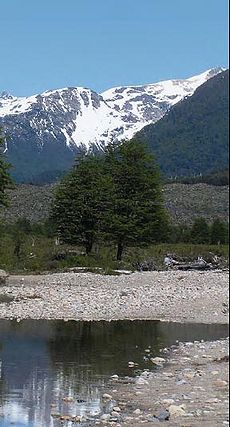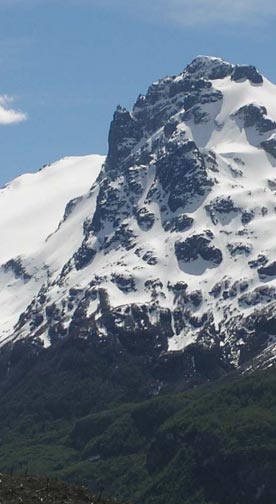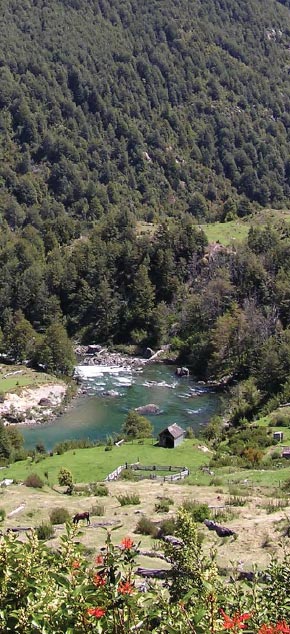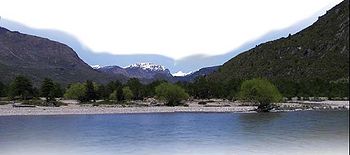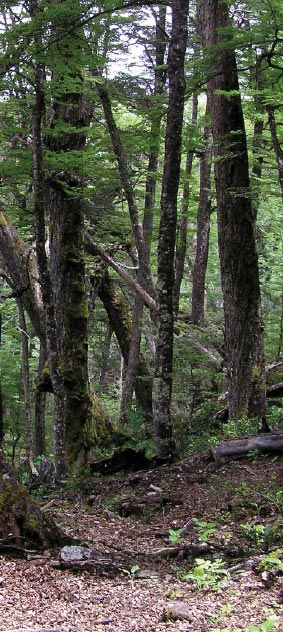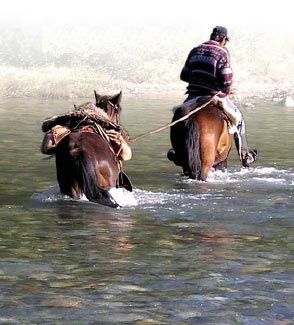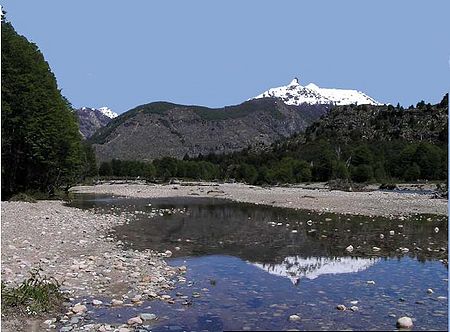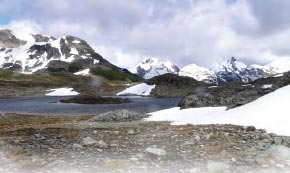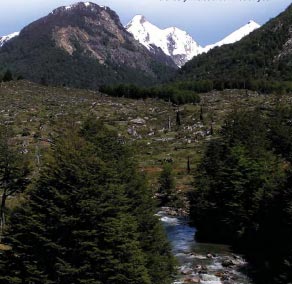Diferencia entre revisiones de «ENG:Lago Palena»
m (Texto reemplazado: «{{RutaForm2_english» por «{{RutaForme») |
|||
| (No se muestran 10 ediciones intermedias de 2 usuarios) | |||
| Línea 1: | Línea 1: | ||
| + | [[ES:Lago Palena]] | ||
{{Indexed}} | {{Indexed}} | ||
{{Rutas Patrimoniales english}} | {{Rutas Patrimoniales english}} | ||
| − | {{ | + | {{RutaForme |
|Actividad=Trekking | |Actividad=Trekking | ||
| + | |||
|País=Chile (english) | |País=Chile (english) | ||
|CiudadesChile=Chaitén | |CiudadesChile=Chaitén | ||
|BellezaEscenica=Mediana | |BellezaEscenica=Mediana | ||
|Atractivos=Bosque, Lago | |Atractivos=Bosque, Lago | ||
| − | | | + | |Duracion=1 día y medio |
| − | + | Algo Exigente | |
| − | + | ||
|Sendero=Siempre Claro | |Sendero=Siempre Claro | ||
|Señalizacion=Inexistente | |Señalizacion=Inexistente | ||
|Infraestructura=Inexistente | |Infraestructura=Inexistente | ||
| − | | | + | |
| + | |Latitud1=-43.618048 | ||
| + | |Longitud1=-71.830597 | ||
|Distancia=67400 | |Distancia=67400 | ||
| Línea 54: | Línea 58: | ||
==Location== | ==Location== | ||
| − | The Patagonian Andes | + | The Patagonian Andes |
Lake Palena Heritage Trail runs | Lake Palena Heritage Trail runs | ||
through a large part of the valleys | through a large part of the valleys | ||
Revisión actual del 20:15 18 dic 2018
|
|
|
| |||||||||||||||||||||||||||||||||||||||||||||
General Description
The Heritage Trail Patagonian Andes - Lake Palena, located in one of the most isolated and topographically complex geographical areas in Chile, represents a unique opportunity for lovers of long-range horseback excursions to retrace the paths traveled by the pioneer settlers of yesteryear in their incursions up the inland valleys of the El Tigre and El Azul Rivers.
This route combines views of exceptional landscape, environmental education, observations of native flora, visits to places occupied in the past and the discovery of one of the most beautiful areas of the Patagonian region of Chile: Lake Palena and the surrounding mountains covered with placid deciduous forests made up primarily of lenga trees (Nothofagus pumilio).
This trail covers 33 kilometers that can be traveled by horseback to gain access to the Lago Palena National Nature Reserve, a little explored wildlife area that because of its beauty and pristine state is representative of how the landscape was in all of these inland valleys in the recent past. Without a doubt, those who visit this interesting route will have reason to meditate about our role throughout history concerning our exploitation of natural resources and its effect on the landscape.
Location
The Patagonian Andes Lake Palena Heritage Trail runs through a large part of the valleys of the El Tigre and El Azul Rivers until reaching little-known Lake Palena located to the south. The trail stars at only 7.8 kilometers south of the town plaza of the town of Palena in the Municipal District of Palena, situated at the southwestern end of Chile Region 10 (the Los Lagos Region). On the east, the area covered by the trail bounds with the mountains of the rich California valley, and on the west with an exuberant cordillera of snowcapped mountains that separates this area from the El Tranquilo River.
Season
Best visited during the months of december to march. The shortness of the season is due to the ammount of snow in the hight parts of the treks (third segment).
Access
Accessing the trail from the north is made by taking the way out of the town to the south from Palena, starting from the town plaza and traveling over Hurtado de Mendoza and Luis Marchant Streets, then continuing onward along the motor vehicle road in good condition that runs toward the town of El Tigre. At kilometer 3 on this road, take the road to the south that runs parallel to the El Tigre River, turning off at an information sign that has general information on the route. Go on another 3 kilometers until you reach the end of the motor road at a point next to a stream where Guidepost 1 is located to mark the start of this heritage trail.
Public transport
(PENDANT)
Trail markings
The trail, which is divided into three separate sections, has 35 georeferenced guideposts to facilitate the orientation and understanding of visitors. The guidepost signs are placed on posts of coihue, ñire and lenga wood 1.5 meters high posted alongside the trail.
The distance between guideposts is variable, depending on the thematic characteristics featured at each point of interest, the necessary directions to be given along the way, and fords to cross over the river. In any event, distances between any two guideposts are never more than 2 kilometers. Additionally, 26 trail markers are used as an aid to indicate the path to take from Guidepost 30 onward in forested areas that have restricted line-of-sight visibility.
Route description
This heritage route starts just south of the town of Palena, located at the south end of the Province of Palena.
The north-south trending landforms of the area traveled by this route feature the valleys of the El Tigre and El Azul Rivers. The route is divided into three sections:
Section 1 starts at the existing end of the motor vehicle road that is to link Palena with the settled locality of El Azul in the future and is to end at that locality.
This section covers a distance of approximately 10 kilometers on a clearly distinct and marked trail with 10 guidepost of interest located along the way.These guideposts are primarily located at sites that feature exceptional views of the landscape, observations of native flora (such as notro and radal trees and regrowth stands of coihue trees) and views of the typical buildings inhabited by those who make these isolated valleys their permanent home. Also provided is a chance to have a sobering look at the effects caused by wildfires set in the past.
This is an ideal trail section to be traveled on foot on a one-day excursion or a half-days journey on horseback.
Section 2 extends onward from Guidepost 10, located at the first crossing over the El Azul River, until reaching an old campsite formerly used by drovers of cattle in what was locally called veranadas, or summer grazing season, driving their herds upland from the low lying portions of the valley every year.
This section is approximately 14 kilometers long and runs over a clearly distinct and marked trail that has 15 guideposts of interest. The route in this section travels on and off along the eastern and western banks of the El Azul River. This requires crossing the mainstream six times along the way, an extraordinary experience that takes us back to the days of those who explored these valleys for the very first time on long treks on horseback in the middle of the Twentieth Century.
It is to be noted that this second section of the trail is where you can also begin to see the snow covered upland cordilleras of the Andes Mountainsrising up to more than 2000 meters above sea level (m a.s.l.). You can also view the first specimens of ñire and lenga, both species belonging to the Fagaceae, or beech family of trees, primary representatives of the temperate forests of deciduous trees (trees that shed their leaves each winter) that are so characteristic of these far southern latitudes of the Southern Hemisphere.
This is an ideal section to be traveled in leisurely fashion on horseback, giving yourself time to take the traditional siestada, or midday rest break and lunch (see below under Section 3), and numerous photographs of the surroundings.
Section 3, the final section of this trail, extends from Guidepost 25 onward until you reach the lakeshores of Lake Palena. It includes 10 guideposts of interest featuring primarily overlooks that afford panoramic views and observations of the native flora that inhabit the Andean upland forests.
This section runs over approximately 9 kilometers of traces that are not always sufficiently well marked or visible because of the few travelers that take this way. We recommend you travel this section by horseback only due to the extenuating effort required to climb the upgrade in this section.
This ascent takes you across a mountain chain at elevations of more than 1300 m a.s.l. separating Lake Palena from the upper watershed of the El Azul River.
Segment 1
Ascent of the Tigre valley
- Distance: 10 km.
- Walking Time: 3 hours.
- Season: Year round
Horseback ride or walk through meadows on upper river terraces with regrowth stands of radal, coihue and notro trees on the eastern slopes of the El Tigre River valley. Also featured are views of homestead sites occupied in the past, observation opportunities for typical settlers buildings and native flora, and natural overlooks with vistas of the main valley and surrounding mountains.
Route traveling over a distinctly visible trail on a traveled way broader than 2 meters on firm, flat, gently sloping ground, interspersed with short upgrades sloping more than 30º. Section 1 is suitable for travel on horseback, or, if walked on foot, by traveling light without carrying any extra load.
Section 1 of the trail starts at the
south end of the motor vehicle road
beside the beautiful, torrential
streamflow of the El Tigre River. The
path to follow on this section is
distinctly visible because it is frequently
traveled by persons and livestock,
which leaves no doubt about the path
to follow. In general, the route you are
about to travel runs on a southerly
bearing, with short upgrades here and
there as you make your way upstream
along the steep banks of the El Tigre
River, a factor to be considered for those
who wish to travel this section on foot.
Remember, the typical travel times
are calculated for those who travel on
horseback.
Starting at Guidepost 1, follow
the broad, clearly distinguishable trail
for around 250 meters south until you
reach a fork in the trail. Take the left
fork. Keep in mind that the next 700
meters of travel are all uphill to climb
up one of the side valleys on the eastern
side of the river valley. In this area you
will be continually surrounded by
growths of radal and notro trees, quila
undergrowth and coihue saplings. The
trail here runs along a gradual ascent
and moves away from the El Tigre River,
but with partial vistas of the river at
certain points. After you reach the top,
you will enter a woods of coihue
(Nothofagus dombeyi) trees
associated with a stream, and thus you
will soon hear the gurgling sound of
flowing water. You are now at the
location of Guidepost 2, named
Estero de los Coihues (Coihue Stream).
This is an ideal spot to have a good look
at this interesting species of tree,
accompanied by ferns belonging to the
Blechnaceae family, locally called
peinetilla.
The coihue is a tree that is
endemic to sub-Antarctic forests and
requires soil having considerable
moisture content for its development.
This is a tree with dense, stratified
foliage made up of persistent leaves
with serrate edges. It grows as tall as 40
meters high, and its wood is resistant
to rot, making it good for use as
building material.
After Guidepost 2 you will go
downhill and cross a creek. Continue
onward until you reach a farm gate just
after crossing another small stream. Go
through the gate, and do not forget to
leave the gate in the same position you
found it, either open or closed, before
moving on. It is important for you to do
the same each time you come to a gate
along the way.
Stay on the main trail and skirt
the west side of an old pioneer settler
dwelling site as you continue on. This
is an interesting area of rolling relief
features covered by a beautiful mature
forest.The land features are reminiscent
of lateral moraine deposits left by
glaciers of time past, which shaped
landforms through the action of their
large masses of glacial ice.
In less than 10 minutes travel you
will arrive at an open valley in which
you will see a second farm gate, which
is located nearby Guidepost 3. This is
an ideal site to observe one of the most
abundant species in the area: the musk
rose (Rosa moschata - locally known
as rosa mosqueta).
The rosa mosqueta is a denizen
species that can be found on disturbed
land and along the wayside of roads
and paths from Region 5 in central
Chile on down to Region 12 at the
southern tip of the country. It is a
deciduous shrub that grows as tall as
2.5 meters. It has pink flowers and
orange colored rose hips that ripen in
autumn. These rose hips are used to
make jellies and jams and to extract
medicinal oil.
Following the trail onward past
Guidepost 3, you will start out on a
long stretch through open meadows
interspersed with abandoned logs of
coihue trees felled by loggers, which
remain as a mute memorial to the time
when this area was covered by dense
forests. At the southern end of this
meadow you will find Guidepost 4 on
flat ground a short distance away from
the east bank of the El Tigre River. This
is a very good site for those who wish
to go down to the mainstream of the
river and admire the beauty of its
transparent water flowing down the
valley. Having a look at the river will
also provide you a short rest break
before you continue on along the trail.
After Guidepost 4 you will come
to an upgrade of 250 meters in length
that will take you up to the upper river
terrace. This latter area features open
meadows over a length of 1 kilometer
aligned in a north-south direction that
have abundant felled logs lying about.
This terrace is approximately 40 meters
higher than the present level of the
mainstream of the river. Once you are
on the terrace you will be able to see
the following guidepost in the distance,
off to the left of a large white rock in
front of you.
Guidepost 5, emplaced on a
small elevation, is at a representative
location to show how important it is to
practice sustainable soil management
if forests are removed. It is to be noted
that the low amounts of organic matter
and nutrients in these soils of volcanic
origin, combined with the fact that they
have been overgrazed by extensive
livestock raising, now make it necessary
to carry out clearing and upgrading
programs to remediate these soils.
Before continuing on along
your way, take a moment to
locate the following
guidepost, which
can be seen off to the southeast. After
a few minutes travel you will come to
a farm gate. Go through the gate, and
after you are on the other side have a
look at a beautiful settlement on the
banks of the El Tigre River off to the
west.
From this point on you will go
uphill continually through land with
regrowth of radal and notro trees, with
possibilities to see a berry bush locally
called murtilla in the lowest canopy of
the woods. After going uphill by no
more than 50 meters in elevation you
will arrive at Guidepost 6, at a locality
called Cuesta La Greda (Clay
Upgrade), named for the fine-grained
grayish materials originated from
volcanic ash that make up these soils.
To be seen at this location are
vistas of the El Tigre River and radal
trees, which along with the coihue is
one of the most abundant species in
these valleys.
The radal (Lomatia hirsuta) is a
perennial tree that can grow as tall as
15 meters high. Tree trunks have thin,
grayish bark. The leaves are large and
oval shaped and bear numerous
bunches of cream-colored flowers.
Radal wood is much appreciated for
use in furniture making, and the bark
of the radal is used to obtain brown
dye. Radal leaves are used in medicinal
baths to assuage pains in the joints. At
present, the major fuelwood supplied
in Palena is radal wood due to its high
heating value. Finally, be particularly
careful not to light fires anywhere along
unpopulated portions of the route.
You will need to continue on past
Guidepost 6 for approximately
another 10 minutes over open, elevated
ground throughout all of this clearly
apparent stretch of trail until you see
the following guidepost in the distance.
You will cross four small streams along
the way, where you can replenish your
water supply. On your right you can see
what are locally called puestos viejos,
a term used to denote old homestead
sites that today often have nothing
more to show for themselves than a
few lingering fruit trees. Shortly
thereafter you will travel over a small
upgrade until you reach the locality of
Cruce de los Riscos (Cliff Crossing)
where you will find a farm gate and
Guidepost 7. It is important in this area
not to stray from the main trail because
the El Tigre runs through a large
canyon, and so areas lying off the
established path can be dangerous.
Once you have resumed your journey
past Guidepost 7, you will continue
climbing uphill on a rocky trail running
between rocky hillsides on either side
and regrowth stands of the same
species of trees as you have seen before
along the way. After traveling around
800 meters from the last guidepost you
will reach the top of the upgrade, where
you will have one of the first panoramic
vistas of the El Azul River valley. In less
than 10 minutes travel you will finally
arrive at one of the most interesting
overlooks on this route, which is the
place where Guidepost 8 is located.
At this overlook you can see the El
Azul River where it meets the El Tigre
River, which has its headwaters in the
valleys that extend eastward to the
Argentinean border.
It is important to note that the El
Azul River valley was not explored until
the 1940s, a time when it was
completely covered with lush mature
forests of coihue, ñire and lenga trees.
Early explorers entered the area by
moving up the banks of the El Tigre
River. A few years later, wildfires were
set to clear land for use for livestock
grazing. The thinking at the time was
that this was good for furthering the
process of bringing in settlers to this
part of Chile.
Complete families moved in
shortly thereafter, and an airstrip was
even built for connection by air. This
was the heyday of livestock raising in
the area, a period which was to last for
no more than 40 years.
After Guidepost 8 you will start
down a downgrade named Cuesta
Caracoles. Take your time and move
carefully when descending this
downgrade because the trail is very
steep and rocky in certain parts. At the
end of this downgrade you will come
to a farm gate on the way to a
footbridge over the El Tigre River, where
you will find Guidepost 9.
Guidepost 9 is an interesting
point to take pictures of the El Tigre
River, the confluence with the El Azul
River and the footbridge over the river.
A pioneer explorer of these parts more
than 50 years ago, José Casanova, axe
in hand, was the first to build a
footbridge on this site. A veritable
historic heritage item along the rivers
of the far south of Chile, footbridges
such as these were the only existing
links to communicate Palena with Lago
Verde Lake (Region 11) through the
rugged country on the Chilean side of
the international border with
Argentina.
After leaving this beautiful footbridge,
resume your journey along the trail on
a descent of another 250 meters until
you reach the lower level of the El Azul
River valley. From there, continue
onward another 600
meters along a clearly
visible trail
until you reach a fork in the trail. Take
the right fork and go on along a less
distinctly visible trail until you pass by
a small stream and a pioneer settler
dwelling and finally reach the El Azul
River, where Guidepost 10 and the
end of Section 1 of the trail are located.
Those who have made the first part of
this trek on foot should keep in mind
that the El Azul River is not safe to cross
on foot at this point. If you want to
continue on any further beyond this
point you will definitely need to have
horses to ride on.
Segment 2
Fording the Azul river
- Distance: 13,64 km.
- Walking Time: 4 hours.
- Season: Oct-Abr
Horseback ride through meadows on lower river terraces with regrowth stands of radal, coihue, ñire and lenga trees in the background in the valley of the El Azul River. Views of homestead sites occupied in times past, observation opportunities for native flora, and natural overlooks in the upper watershed of the El Azul River.
Route follows a distinct, marked trail on flat ground that at certain points is washed over when running over streambeds. Suitable for use only by persons on horseback who have at least a minimum amount of experience in lengthy mounted excursions over land with river crossings.
Starting out from Guidepost 10,
cross the river a few meters
downstream from this guidepost by
moving on a generally southerly
bearing. Face the current (upstream)
and move diagonally against the
current as you ford the river. Seek out
the shallowest parts (locally named
vados de río) as you cross, and keep
your gaze high enough so you can
keep in sight the point on opposite
bank where you want to arrive. Fording
like this is locally called vadear el río.
This technique is generally applicable
for fording rivers such as these, which
sometimes have currents that can even
take experienced scouts or gauchos
by surprise. If you are not traveling with
local guides, enquire beforehand with
well informed persons about the
streamflow and water stage conditions
on the river because at times of heavy
rainfall or thaws that generate large
amounts of meltwater runoff, the El
Azul River can turn hazardous and
impossible to cross, even on horseback.
This can be particularly so in the
afternoon.
After you arrive on the south bank
of the El Azul River, follow the edge of
the river upstream using the main trail
all along the way until you reach the
community center building (sede
comunitaria) of the village of El Azul,
where Guidepost 11 is located. At this
point, radio communications with
Palena are available on radio
equipment operated by the
inhabitants of the village themselves
for use in case of emergency.
After passing Guidepost 11,
continue onward along the main trail
running parallel to the El Azul River.
After a short way you will see on your
right one of the first houses built in this
valley. You will note that the old-time
pioneers always wound up building
their houses on the upper terraces of
valleys to stay high and dry in case of
flooding on these rivers.
Continuing on along the western
bank of the main river you will come
to a fork in the trail. Take the left fork,
and a few meters ahead you will see
Guidepost 12, located at the
second ford over the El Azul River.
Observe the same precautions and
recommendations given above for the
first river crossing.
After you have reached the
eastern bank of the river, resume a
southerly bearing along the clearly
distinguishable trail, which runs
between a fence and the mainstream
of the river, until you arrive at
Guidepost 13, located at the site of an
alternate river ford where you can cross
over the other side to go to a family
dwelling that offers lodging if you want
to stay the night. For those who want
to go to this family inn, we recommend,
however, that instead of crossing the
river you continue on upstream from
Guidepost 12 on that same side of the
river for somewhat less than 1
kilometer from that guidepost until
you run across this picturesque lodging
house.
When you continue your journey
onward from Guidepost 13, follow the
valley for a short distance along the
river across flat ground of an open
meadow that has stony parts left from
old riverbeds until you finally reach
Guidepost 14 near a farm gate. This
location is called Rincón de la Cabaña
(Cabin Corner) due to the existence of
a cabin on the south end of this broad
expanse of flat ground. This is a place
where you will need to take care to
ensure that you stay on the right path.
After you go through the farm
gate, travel onward by taking the path
that leads to the right and runs parallel
to the fence, where you will soon find
a small woods of tall coihue trees a few
meters west of this cabin at a place
where you will once again be facing
the main river. There you will find
Guidepost 15, which is the start of a
part of the trail that runs along the
eastern bank of the El Azul River
without having to cross the river. A
noteworthy point to be mentioned
about this location is the large poplar
trees and fruit trees standing on the
opposite side of the river, signs of it
being the site of a family homestead
in the past. This is the reason why this
place is locally called Puesto Viejo (Old
Homestead Site).
After Guidepost 15, follow
alongside the river and pass by a
wooden fence inside a beautiful
woods. On the other side you will find
a meadow with felled tree logs until
you reach Guidepost 16 shortly
thereafter. Looking south from this
guidepost you can see a large house
of local settlers. At this point you can
see how the regrowth stands of coihue
trees on the opposite hillsides have
reestablished themselves vigorously in
the period after the large forest fires
that raged in the past.
At Guidepost 16 the trail forks.
Take the right fork and follow the trace
that runs between the fence and the
river over land dominated by growths
of shrubs such as chaura, murtilla and
michay, with dispersed stands of young
notro, radal and coihue trees. On the
far south side of the end of the valley
you will find Guidepost 17, where you
can see the first specimens of lenga
(Nothofagus pumilio) trees along the
way.
The lenga is a symbolic tree of
sub-Antarctic forests, growing from
Andean cordillera portions of the
Maule region (Chile Region 7) until the
seashores of Tierra del Fuego Island. It
is a deciduous tree that grows to as tall
as 30 meters with a trunk measuring
more than 1 meter in diameter at
breast height. This tree can withstand
snowstorms, heavy winds and
extremely cold frosting, which makes
it the unique representative tree at
locations near the timberline in the
Andes at these far southern latitudes.
Lenga wood is of very good quality,
especially for use in building and
furniture making.
After you leave Guidepost 17
behind you will start out on a gentle
upgrade for around 100 meters and
enter an area of abundant regrowth
stands of radal trees. You will need to
be careful about staying on the right
path in this area because at certain
points you could lose your way if you
are not careful: you will need to travel
on a generally southeast bearing until
you reach a fork in the trail. Take the
left fork, which will lead you over a new
trail running uphill that was made to
skirt around rocky areas. Once you
reach the highest part of the trail you
will see the following guidepost, with
only 400 meters remaining at that
point to reach it. Guidepost 18 is
named Bardas Blancas (White Bluffs)
for the numerous grayish rock cliffs
located on both sides of the valley. This
is an ideal spot to gaze at the beautiful
virgin forests of coihue and lenga trees
in the southwestern sub-basins of the
El Azul River.
After you pass Guidepost 18,
continue onward for somewhat more
than 100 meters until you reach a new
fork in the trail. Take the left fork, which
will shortly lead you along the edge of
a small lake. Continuing onward on
the main trail you will have a few vistas
of the river as you go downslope until
you once again reach the banks of the
main river after a few minutes. Keep
traveling on a southerly bearing
through a broad expanse of flat
ground with a dense cover of notro
trees until you reach the north bank of
the river. This is the location of
Guidepost 19, which marks the way
for the third crossing over the El Azul
River.
If you look closely at the opposite
bank of the river directly south of where
you are standing you may be able to
spot Guidepost 20, located at a place
called Puesto El Manzano, the site of
an old cabin that has fallen in with the
passage of time at a place beside a
willow tree and woods of lenga trees.
After leaving Guidepost 20 you
will need to continue following the
edge of the river upstream for
somewhat more than 100 meters and
then ascend to the high part of the
hillside. After you continue onward on
the main trail for a few minutes more
you will soon start out on a gently
descending portion that will take you
to a small valley by skirting around the
rocky hillsides that you will see on your
right side. Continue onward until you
reach Guidepost 21, located at the
start of the fourth crossing of the El
Azul River.
To ford across the river at this
point, take a bearing on some lenga
trees located on the opposite bank as
you work your way diagonally
upstream across the river.
Once you reach the opposite
bank, go on for 150 meters in a
southeasterly direction until you cross
a creek. At that point you will be able
to see a small cabin located a few
meters to the east. This place is called
Puesto Esperanza.
After crossing the creek, continue
onward up the valley on a trail running
parallel to the river over open ground
covered with low stands of weed
growth until you soon come to a fence.
At the fence, turn to the east for a few
meters and you will find a farm gate,
which is the location of Guidepost 22.
At the other side of the gate you
will enter the first mature forests of
lenga trees that you will see in the El
Azul River valley. Go on for around 900
meters on a southerly bearing over a
distinctly visible trail until you reach a
crossing point over a small stream. You
will now start to travel over stony
ground that is a part of the far eastern
side of the El Azul riverbed. Continue
onward over this ground for another
300 meters alongside the river over a
stretch with the first views of the
mountains of the upper watershed.
Continue onward over a lower river
terrace covered by a dense colony of
calafate undergrowth interspersed
with stands of quila brush.
Looking to the east while on this
flatland you will be able to see a large
waterfall, and looking to the south you
will see Guidepost 23, located at the
fifth and second-to-last crossing of the
El Azul River.
This guidepost, besides pointing
out to you the place to ford the river,
also marks an opportunity to observe
calafate (Berberis microphylla)
growths.
The calafate, a species of shrub
belonging to the Berberidaceae family
of plants, grows from the Maule Region
(Chile Region 7) southward to
Magallanes (Chile Region 12) on wet
soils with poor drainage. It bears single
flowers that are golden yellow, and its
fruit, a round blue-black berry, is edible.
The medicinal uses of this shrub stem
from its laxative properties.
After you cross the river, you will
once again enter the lenga forest on a
narrow, but clearly distinct, trail
running parallel to the river until you
arrive once again at the north bank of
the main river. At this location you can
see Guidepost 24, which marks the
sixth and last crossing of the El Azul
river, at a location next to large lenga
and ñire trees. It is to be noted that this
is the area of the confluence of the El
Azul River with an unnamed river,
which you will skirt around further
ahead as the upper watershed of the
main river curves to the west.
Numerous individuals of caiquén
(Chloephaga picta), a bird that
inhabits primarily open ground, are
habitués of this part of the river. Their
heads and backs are white with black
bars. The males can be distinguished
by their being lighter in color on their
upper parts and darker on their lower
side.
Once you arrive on the south
bank of the river, continue upstream
along the bank of this river of clear
water to no more than 100 meters from
the last crossing until you reach a farm
gate that is the entrance to a forest of
lenga trees. From this farm gate on,
only 150 meters of trail remain to be
traveled in a southeasterly direction
through the mature forest until you
reach the last settlement located on
this route prior to reaching Lake
Palena. This is Guidepost 25, the end
of the Section 2 of the trail.
Segment 3
Mountains of Palena Lake
- Distance: 9,04 km.
- Walking Time: 3 hr. 10 min.
- Season: Dec-Mar
Horseback ride through Andean upland meadows, marshy grasslands and forests of lenga trees in the upper watershed of the El Azul River and northwestern end of Lake Palena. Observation opportunities for native flora and natural overlooks with vistas of the main valley, surrounding mountains and Lake Palena.
Travel over firm ground on a trail that follows a distinctly visible trace, although vanishing from sight in certain parts. Slopes are gentle to steeply inclined, with lengthy upgrades that slope more steeply than 30º. Suitable only for persons who have experience with lengthy excursions on horseback through mountains in areas exposed to high winds.
Starting at Guidepost 25, leave
the forest by traveling southward
through a meadow covered with
calafate growth. Take your bearings on
a farm gate located around 600 meters
to the south. Once you reach the
following creek, a watercourse that
flows down from the high watershed
of the main valley, turn to the east and
continue along the trail. Do not cross
the creek.
Be careful to keep your bearings
upon traveling over the following
stretch of trail as you move upstream
along the creek in a southeasterly
direction because the trail disappears
suddenly along the way. So, go due
south around 100 meters and then start
going uphill along the slope of a hillside.
From there, calculate another 500
meters until you reach Guidepost 26.
This is the area where the creek from
the waterfall meets the watercourse
coming in from the upper watershed.
It is also the last place before you start
out on the route that takes you across
the mountains that provides good
shelter from the winds and snows that
blow through the valley because it is
associated with sheltering woods of
lenga trees. This is a site where you can
also observe the waterfall and
surrounding mountains.
Continuing onward from
Guidepost 26, go uphill along the
fence running up the hillside until the
fence ends. This is the start of an
upgrade running parallel to the creek,
which you can see to your right. In this
area, the trail vanishes from sight once
again. Try to bear gradually to the
southeast by traveling in a zigzag
fashion until you cross above the
waterfall on the north side of it. Move
away from the waterfall a little bit until
you cross a small brook in the high part.
This is where you will find Guidepost 27, located beside a fence.
Guidepost 27 is perhaps one of
the best vantage points for viewing the
El Azul River and its associated
watershed. Again, the dominant
landform that meets the eye of the
viewer is the cordillera of the Andes
Mountains, covered with a dense virgin
forests that stand in contrast with the
barrenness of the valleys and hillsides
that were leveled by wildfires, making
for one of the most desolate landscapes
one can see in all of Patagonia. Of
interest to note is the glacial origin of
these valleys, where you can identify
characteristic U-shaped landforms,
made with cirques, troughs and
shoulders, in the upper valley of the El
Azul River. We recommend you make a
brief halt here before you resume your
ascent of the mountains.
After you leave Guidepost 27,
continue climbing up the hillside by
skirting along the north side of the
lenga forests located nearby. Move in
zigzag fashion to follow a general
bearing to the southeast. A short while
after you start out you will arrive at the
lower edge of the forest, where you will
need to continue onward by following
a clearly distinguishable trail that
enters a mature forest of lenga trees.
This is the location of Guidepost 28.
Noteworthy at Guidepost 28 is
the opportunity to observe a
characteristic lichen of upper montane
deciduous forests in the far south of
South America locally called barbilla,
barba de viejo, barba del diablo or
barba del monte for its bearded
aspect (Usnea barbata). This
is an epiphyte that makes
use of its host tree for
support only and does not cause any
damage to the host. This lichen has
antibiotic properties and was
traditionally used as a dyestuff.
Moving on from Guidepost 28,
enter the forest by following a clearly
distinct trail. This will take you along a
beautiful route through an area with
old-growth lenga trees, accompanied
by an extremely rich variety of species
of nature in the lower canopy and
understory. You can keep track of your
progress by counting the small stream
crossings encountered along the way,
which are no more than three in
number, until you reach a small gap in
the forest. You have arrived at a place
locally called Primer Portezuelo, and
area of marshy grasslands of hard
grasses devoid of trees. These wetlands
are the headwaters of the main creeks
running out of the area.
Cross this gap by moving forward
around 100 meters on a bearing to the
south over ground without any trail
until you arrive once again at the forest
edge. Here you will find the traces of a
trail that will take you into the forest.
This is the location of Guidepost 29.
After you leave Guidepost 29,
follow the trail around 130 meters to
where you cross the stream that has
the waterfall located on it. As you
continue on along this route, you will
emerge from the forest once again and
move into a large expanse of marshy
grasslands. This is the location for
Guidepost 30.
We recommend you take a brief
rest break at this guidepost, where you
can also give the horses a chance to
graze. It is also possible here to enjoy a
tradition locally known as a siestada,
a customary break that people take at
midday in Patagonia to eat roast meat
and bread or cake and sip yerba mate
while sharing pleasant conversation
around the fire.
Before resuming your journey
from Guidepost 30, have a look at the
lowest part of the mountain chain
located to the south-southwest where
you can spot the following guidepost,
located at the start of the mountain
pass that will take you over the
mountains to Lake Palena.
After leaving Guidepost 30,
continue onward for around 400
meters through these trackless natural
meadows until you enter the forest of
lenga trees once again. Take your
bearings on Guidepost 31 to know the
path to follow, aided by a few trail
markers placed on trees along the way.
Once you are in the forest, you will
start out on a steep uphill climb over a
clearly distinct trail for about 300
meters until your reach the upper edge
of the forest, where you can see
Guidepost 31. This point marks the
start of an area with open ground and
moist grassland and rocks, typical of
high-montane environments in
periglacial settings, with limited
growths of vegetation and a continual
interplay with the activity of ice.
When leaving Guidepost 31
behind, go on for a few meters to the
southwest, and you will soon see the
next guidepost. Take the utmost care
to stay on course as you pass
Guidepost 32 and enter a flatter
section of ground. There is no trace of
the trail in this area, and many people
could make the mistake of traveling to
the west, which leads to nowhere.
Continuing on past Guidepost 32, take a bearing of 158º using as a
reference the western edge of a small
mountain peak covered with stunted
coihue growth. From this last milestone
continue on for around 400 meters over
flat ground where the trail is not
distinguishable. Pass by a small lake
until you reach a larger lake that you
can see on your right hand side. From
the time you find this last lake, bear
gradually to the southeast by following
the rocky hillside that will be on your
left. After you leave the lake behind, a
few meters ahead you will be able to see
Guidepost 33 on a small rocky piece of
elevated ground. This is an exceptional
overlook for viewing a large part of the
main peaks associated with this nature
reserve. It is also the place to finally have
the first panoramic vistas of Lake Palena,
one of the most spectacular lakes in all
of Patagonia, nestled in a dense forest
made up for the most part of lenga trees.
In general, this site is considerably
exposed to cold winds blowing down
from the cordillera, and therefore we
recommend that you protect yourself
with windproof, thermal clothing to
prevent symptoms of hypothermia or
freezing.
After you leave Guidepost 33 you
will start on the downhill trail leading to
Lake Palena.You can keep your bearings
by taking a sighting on the east end of
the lake, which runs parallel to a small
creek that flows in a southeasterly
direction until it finally outfalls to a
broad, open area with marshy
grasslands. You will need to take into
account the fact that in the part of the
trail extending from the last guidepost
onward to this grassland large
snowpacks may accumulate annually
and remain on the ground on account
of this being land that has southerly
exposure. We therefore recommend you
take the utmost of precautions and
move carefully when traveling downhill.
You will need to travel around 250
meters un a south-by-southwesterly
direction over this open expanse of
ground until you find the entrance to
the woods, where a clearly
distinguishable trail is located.This is the
site of Guidepost 34.
Moving on from Guidepost 34,
the only part left to travel is the final
descent through an interesting mature
forest of lenga trees in which Lake
Palena will appear to you nearer and
nearer as you approach the end of the
trail. It is to be noted that this is a descent
over hard clayey ground with steep
slopes that in places can be difficult for
pack animal to negotiate. We therefore
recommend that after you travel no
more than one-half kilometer from the
last guidepost you should dismount and
lead your horse by the bridle on foot for
your own safety.
Follow at all times the most
distinctive trail because there are forks
and side trails at certain spots.
Remember that this part of the route is
also used by wandering herds of
livestock and that there are usually
several alternate paths that arrive at the
same place. To ensure that you do not
stray from the right path, you can guide
yourself by the trail markers, which you
should see at no more than 10-minute
intervals as you travel along until you
finally reach the forested lakeshores of
Lake Palena.
You can spot Guidepost 35 beside the
trail at a few meters distance from the
lakeshore, where you will have access to
drinking water. This is a small wooded
terrace suitable for camping or to take
a well-deserved rest before you start out
on the return trip.
Doubtlessly, the magic and mystery of
this little-known lake will pervade us and
leave a deep impression on us with its
ripping water that is of a clarity you may
have never seen before. This lake is fed
by water caught by the deciduous forests
with their myriad of colors in autumn in
this nook of the Patagonian Andes
Mountains, which surely you will find
hard to forget.
Recommendations
- This trekking is described in full detail in the following topoguide of the Ministery of Public Patrimony. The printed guide can be obtained for free in the Ministery:56-2-3512100 -> 2325. It is hihgly recommended to take it to the walk, as it enriches the experience with descrptions of flora, fauna, geography and geology.
- Do not try to do the trail at times of heavy precipitation or major thaws of Andean snow and ice. The streamflow on the El Azul River can rise rapidly and make it impossible to cross over to start Section 2 of the trail.
- Keep in mind that the route is not suitable for travel as far as Lake Palena from mid austral autumn to the end of austral spring
due to abundant rainfall and buildup of snowpacks in the mountains.
- If you wish to stay overnight at family lodging places or campsites, get in touch with the office of tourist information or directly with inhabitants of the village of El Azul before starting out on the trail.
- For additional information, please contact
the following: Provincial Field Office of the Chilean Ministry of National Property, Office of the National Forestry, Corporation (CONAF) at Palena or the Tourist Information Office
Basics
- Take rainwear and thermal clothing along with you for your safety and comfort.
- Take UV sunscreen protection.
- Carefully read this description of the route before starting out on it.
- Wear high- or low-top boots that are comfortable and safe for use when put into stirrups.
- Take a map of the route along with you and a watch to keep track of the time.
- Take along bags to bring back your garbage and trash with you.
- Enquire at the town of Palena before you start out regarding the conditions of weather, conditions of streamflow and water stage on the El Azul and snowpack accumulations in the cordilleras, all to better plan your trip.
- Do the trail accompanied by at least one other person and go prepared with all the information you will need.
- Keep the travel times for each trail section in mind so that nightfall or a change in the weather does not catch you off guard.
- Do not stray from the trail for any reason.
- Travel along the marked or indicated route only.
- Do not ever leave farm gates any other way than the way you found them.
- No hunting. Do not disturb native fauna.
- Do not pick any plants or parts of plants that are native flora.
- No littering. Bring back all of your trash with you.
- Always put out your fires with copious amounts of water and stir until cold.
- Do not light fires inside a forest for any reason. Taking good care of our forests now is everybodys responsibility!




